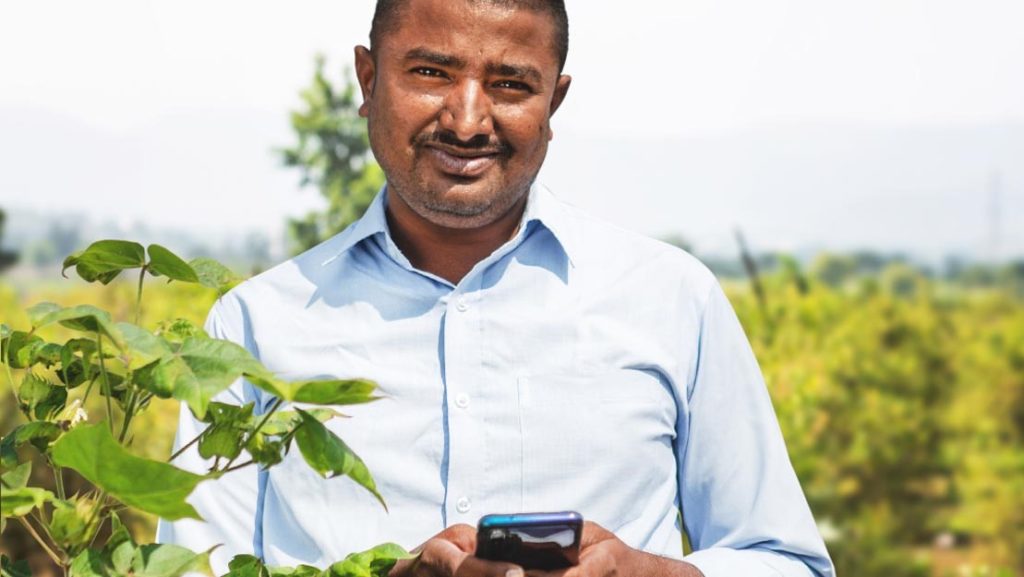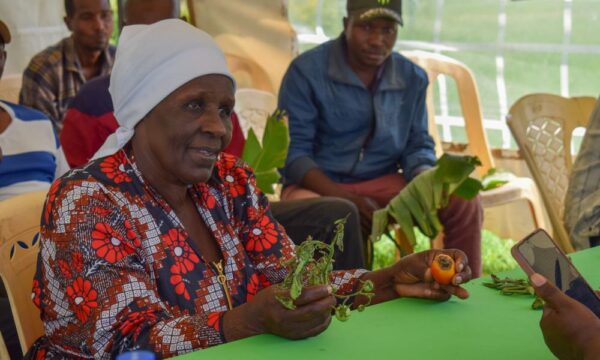
CABI and the start-up Plantix work together to improve the Plantix farmer app. As a result, the app is now able to detect several diseases for the first time.
Worldwide, farmers face huge problems when pests and diseases threaten their crops. The stakes are high and the task to identify precisely the cause of the problem is often not an easy one.
It is estimated that 30-50% of all crops grown during one year are lost due to pests and diseases. Behind these numbers, there are plenty of debt burdens, destroyed livelihoods, and hunger.
The good news is that farmers are not completely alone in their struggle. CABI, with its expertise in plant health, and through its flagship development programmes like Plantwise, which supports establishing network of plant clinics, focuses on improving the livelihoods of smallholder farmers by helping them to reduce crop losses. The start-up Plantix (product of PEAT GmbH) has joined the fight against plant pests and diseases and has built a mobile app, also called Plantix, which is powered by the latest AI technology and which is becoming very popular among farmers.
The Plantix app uses image recognition and, in order to train this function, the underlying Deep Neural Network (DNN) needs to learn from many images of crop and disease pairings. Like an apprentice on its way to becoming an expert, AI needs to be continuously fed with high quality input. In other words, it requires good teaching, and this was precisely the goal of a recent joint project.
In an 18-month project in Tamil Nadu, India, CABI and Plantix aimed to strengthen the app’s image recognition for 19 important diseases attacking rice, banana, capsicum, groundnut, eggplant, and maize.
Teams from CABI and the M S Swaminathan Research Foundation (MSSRF) collected 52,000 images of these crops showing symptoms of the selected diseases. These images were validated by experts and the resulting material was then used to train Plantix’s algorithm. Two methods were used for testing the outcome of the collaboration, in the field and in-house.
In both cases, the results were split into three categories:
‘TOP’ – the app returned the correct answer, either as the only diagnosis or the top item in a list
‘IN-LIST’ – the correct answer was within the shortlist but not at the top
‘WRONG’ – no correct answer was returned
For the in-house performance testing of the algorithm, the results at two different points in time were compared: before March 2018 and after October 2019. On average, 140 pictures of each of the diseases were used. To ensure as little bias as possible, none of the images used for training was reused for testing.
A comparison between test results before and after the collaboration revealed an average improvement of 25% in the ‘TOP’ category and 7% in the ‘IN-LIST’ category.
Experts from CABI, MSSRF and International Crops Research Institute for the Semi-Arid Tropics (ICRISAT) then challenged the app in the field with 900 cases collected in Kharif 2019 and demonstrated that the project had considerably improved Plantix’s performance.
From the 900 photos used, the app was initially able to return the correct diagnosis in more than 51% of cases. With the app confidence adjusted slightly, it returned a ranked list of up to three of the most likely diseases. In 75% of such cases, the correct diagnosis was the top item and, in 80% of cases, it was within the top three. In 20% of cases, the app was not able to detect the correct disease, revealing that a small number of diseases, such as foot and collar rot in peanut, are simply not well suited to diagnosis based upon image analysis.
In addition, the project also targeted the recommendations given by the Plantix app. In a workshop in Tamil Nadu, CABI, Plantix, MSSRF, and governmental authorities discussed and improved the recommendations for 19 disease diagnosed by the app.
Thanks to this collaborative effort, Plantix’s accuracy has now been improved, and seven new diseases have been added to the 400 diseases, pests and nutrient deficiencies that the app is already able to detect.
With the Plantwise plant clinics and scientific knowledge transfer, and digital tools like Plantix, farmers are able to detect plant problems more easily, in good time, with effective, safe, and environmentally-sustainable ways to control them.
3 Comments
Leave a Reply
Related News & Blogs
The ‘plant’ doctor will see you now
This blog was originally published on Good Food Movement Until five years ago, M. Muthulakshmi, a farmer from Thoppupatti village in Dindigul district, Tamil Nadu, relied heavily on chemicals, including banned antibiotics like streptomycin, for her pad…
4 February 2025





https://www.flickr.com/photos/bapujiarcot/albums/72157620584476133
You can make use of agricultural photos in this website. You can mention my name as a source.
Thanks Arcot. We will have a look
As a plant doctor based in Nakuru I have found the app very important as it’s giving instant solution to a farmers problem.
Bravo. Plantix is the solution.